To bring sustainability and prosperity to their farms, some agriculturalists in southern Taiwan have embraced innovative types of companion planting. In contrast to the monoculture that dominates much of the rich world’s farmland, companion planting is the cultivation of different crops in proximity, usually to optimize the space, for pest control or to enhance pollination.
The symbiotic relationship between cacao trees and betel nut, which may be unique to Pingtung County, is striking when one visits the cacao plantations maintained by Choose Chius (邱氏可可) and Wugawan (牛角灣) in Neipu (內埔).
The history of growing cacao in Taiwan goes back to Japanese colonial rule. Taichiro Morinaga, founder of Morinaga & Co — the first modern candy company in Japan, and the first manufacturer of chocolate in that country — visited Taiwan in 1927 to find land suitable for growing cacao. He hoped the company could become self-sufficient in cocoa in order to meet the high demand for chocolate in Japan.
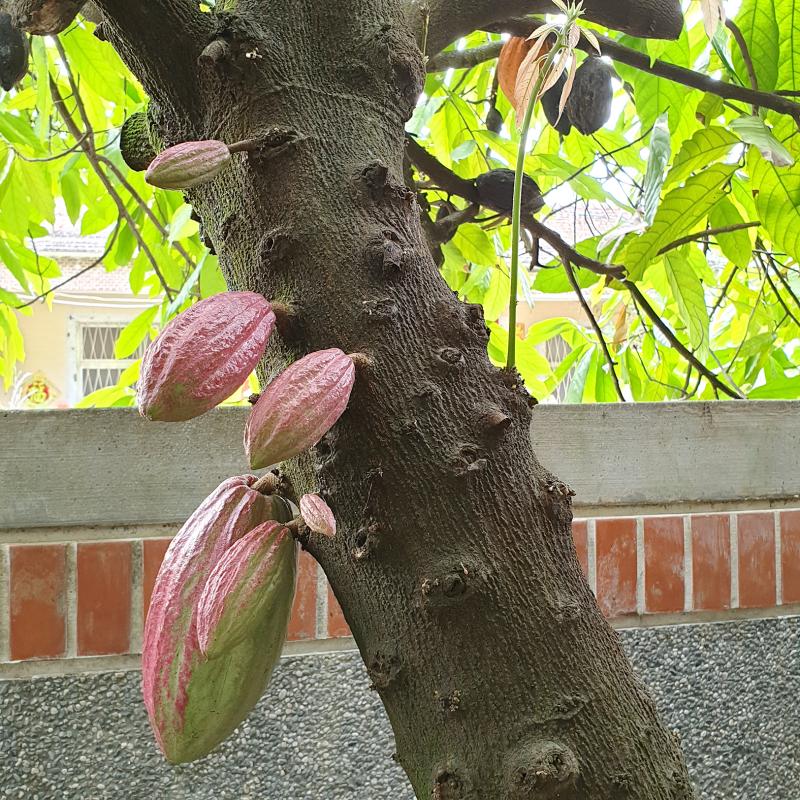
Photo: Katy Hui-wen Hung
His successor, Matsuji Ogushi, continued the cacao mission in 1937, setting up a cacao-focused research institute in Pingtung County. However, challenging conditions and the outbreak of World War II dashed Morinaga’s and Ogushi’s Taiwan chocolate dreams.
When the Japanese left in 1945, the Neipu area was dotted with cacao trees, but unsustainable farming techniques meant few of them survived. The growing of cacao became a forgotten wrinkle in the region’s agriculture history, especially after the Chinese Nationalist Party (KMT) regime began to promote betel nut for its economic value.
HAKKA CHOCOLATE
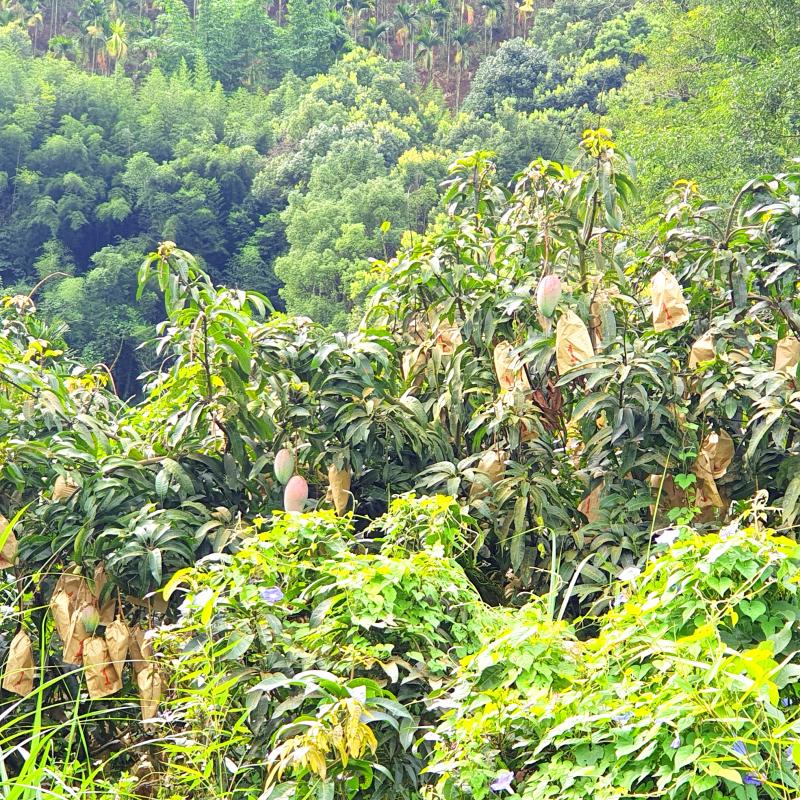
Photo: Katy Hui-wen Hung
Now, as before, cacao cultivation is concentrated in Hakka communities in Pingtung County. Chiu Ming-sung (邱銘松), a Hakka farmer who started growing betel nut in 1975, led the cacao comeback in 2000. He was seeking a new business direction, recognizing that the popularity of betel nut was beginning to wane.
Chiu discovered that growing cacao under betel nut palms is the best way to develop a new business while continuing with the old. The ideal cacao plantation is hot and humid, but sheltered from both sunshine and wind. Betel nut palms provide shade. During the typhoon season, tying cacao trees to the trunks of betel nut palms prevents the former from toppling.
With support from an extended family and a great deal of effort to develop new techniques, in 2010 Choose Chius became the first Taiwanese “from tree to bar” chocolate brand. There are now more than 30 across Pingtung.
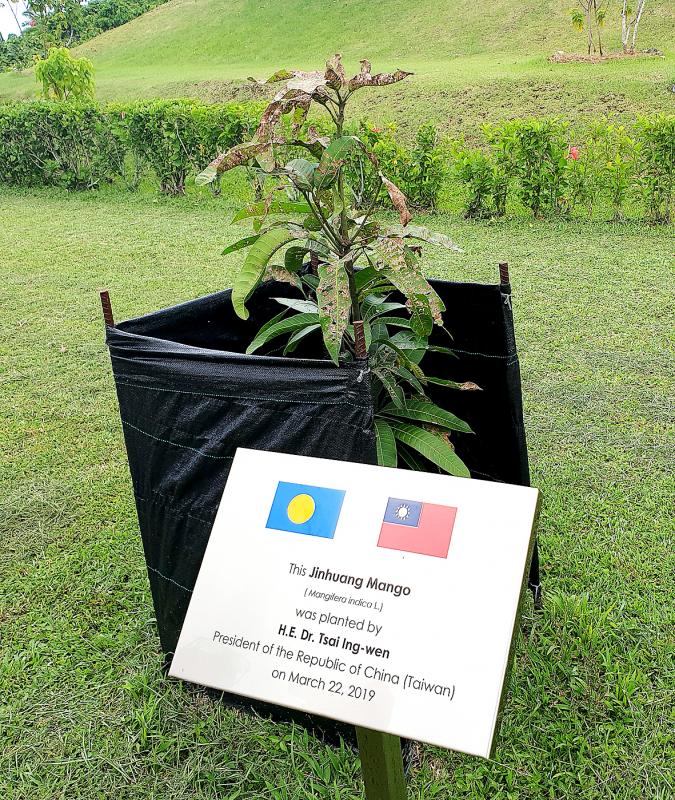
Photo: Katy Hui-wen Hung
CHOCOLATE CURRY AND NOODLES
Wugawan founder Lai Hsi-hsian (賴錫賢), a pineapple farmer who practices eco-friendly agriculture, developed with his wife a curry recipe that uses 100-percent chocolate and chocolate-flavored noodles. The cacao trees he cultivates are protected by banana trees and betel nut palms.
Another kind of companion planting was pointed out to this reporter during a visit to Namasia (那瑪夏), a mountainous indigenous township in the northeastern part of Kaohsiung.
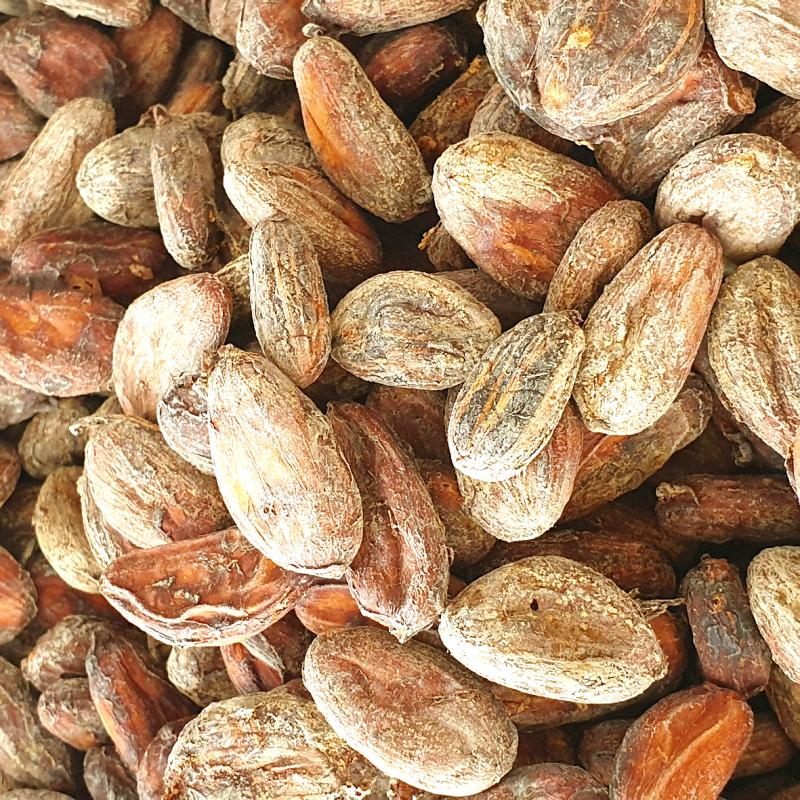
Photo: Katy Hui-wen Hung
Some fields in Namasia are used to grow Jinhuang (金煌) mangoes. This highly popular variety is named after the Taiwanese farmer who spent 12 years developing it, then considerable time improving its appearance and taste. The Jinhuang mango last year received the presidential seal of approval when President Tsai Ing-wen (蔡英文) planting a Jinhuang cutting while visiting Palau.
Alas Istandah, a local indigenous woman who co-manages a restaurant and a campsite, identified intertwining aiyu (愛玉, an endemic subspecies of Ficus pumila used to make a jelly dessert) among the mango trees.
According to Istandah, mango tree roots grow so extensively and deep into the soil that they absorb enough water to nourish what grows around them. They also function as an ideal support for a climbing fig.
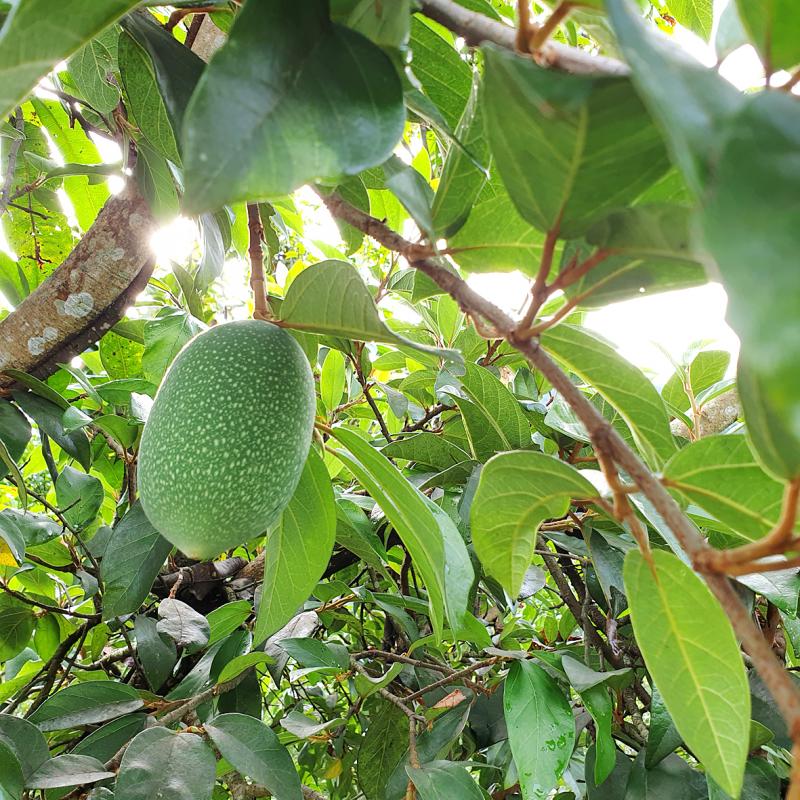
Photo: Katy Hui-wen Hung
“You can see different generations of companion planting methods here,” says Istandah.
She further explains that “older generation” refers to the traditional “marriage of the two” method, in which the farmer planted mango and aiyu roots deep into the soil. The “younger generation” is a shortcut method of growing aiyu by wrapping the vine around a concrete post up for some ten years, before tying it to a supporting mango tree.
“These companion methods have been around for decades,” says Istandah.

On Jan. 17, Beijing announced that it would allow residents of Shanghai and Fujian Province to visit Taiwan. The two sides are still working out the details. President William Lai (賴清德) has been promoting cross-strait tourism, perhaps to soften the People’s Republic of China’s (PRC) attitudes, perhaps as a sop to international and local opinion leaders. Likely the latter, since many observers understand that the twin drivers of cross-strait tourism — the belief that Chinese tourists will bring money into Taiwan, and the belief that tourism will create better relations — are both false. CHINESE TOURISM PIPE DREAM Back in July

Taiwan doesn’t have a lot of railways, but its network has plenty of history. The government-owned entity that last year became the Taiwan Railway Corp (TRC) has been operating trains since 1891. During the 1895-1945 period of Japanese rule, the colonial government made huge investments in rail infrastructure. The northern port city of Keelung was connected to Kaohsiung in the south. New lines appeared in Pingtung, Yilan and the Hualien-Taitung region. Railway enthusiasts exploring Taiwan will find plenty to amuse themselves. Taipei will soon gain its second rail-themed museum. Elsewhere there’s a number of endearing branch lines and rolling-stock collections, some

Could Taiwan’s democracy be at risk? There is a lot of apocalyptic commentary right now suggesting that this is the case, but it is always a conspiracy by the other guys — our side is firmly on the side of protecting democracy and always has been, unlike them! The situation is nowhere near that bleak — yet. The concern is that the power struggle between the opposition Chinese Nationalist Party (KMT) and their now effectively pan-blue allies the Taiwan People’s Party (TPP) and the ruling Democratic Progressive Party (DPP) intensifies to the point where democratic functions start to break down. Both

This was not supposed to be an election year. The local media is billing it as the “2025 great recall era” (2025大罷免時代) or the “2025 great recall wave” (2025大罷免潮), with many now just shortening it to “great recall.” As of this writing the number of campaigns that have submitted the requisite one percent of eligible voters signatures in legislative districts is 51 — 35 targeting Chinese Nationalist Party (KMT) caucus lawmakers and 16 targeting Democratic Progressive Party (DPP) lawmakers. The pan-green side has more as they started earlier. Many recall campaigns are billing themselves as “Winter Bluebirds” after the “Bluebird Action”